How many eggs does a laying hen lay per day, week and month
The egg production of chickens is one of the main parameters that the breeder is guided by when deciding to start breeding hens. Since the majority of farmers are focused on making a profit from egg-laying products, poultry productivity will be considered as a factor determining the rate of return from the implementation of the event. Experts say that the main factor that determines the rate of laying eggs per unit of time in chickens is their breed. However, there are other conditions, upon reaching the optimal values of which, an increase in the productivity of the livestock is observed. These parameters include the use of a diet balanced in the composition of mineral components, ensuring rational conditions for keeping layers in the hen house, timely sanitary and antiparasitic treatment of premises and birds.
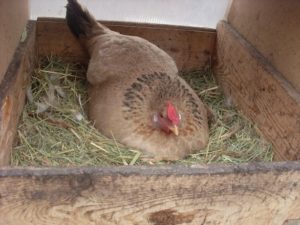
Content
How many eggs does a chicken lay
The number of eggs produced by a hen during the reproductive period depends on from the time of entering puberty and from the breed, which determines the direction of the farmer's economic activity. So, if the representatives meat and egg rocks capable of laying for 4 years, then the reproductive capabilities of chickens egg directions are exhausted through 1.5-2 years... In order to increase the period during which the laying hens retain the ability to lay clutches, experts recommend revising the bird's diet, ensuring the intake of vitamin supplements, vegetables, herbs and nutritious feed mixtures into its body. On the other hand, motivated by the desire to increase the profitability of laying hens, some breeders purchase hybrid breeds. They are distinguished by their ability to produce eggs not from 4 months (like in egg) or 6-8 months (for breeds of meat and egg direction), but several weeks ahead of schedule.
Note! Experts do not recommend accelerating the onset of laying, since this may not only be fraught with the appearance of pathologies associated with the load on the under-formed organs of the bird's reproductive system, but also lead to the appearance of small eggs.
The peculiarities of the physiological cycle of laying in chickens include the fact that even under the best conditions of keeping, more than one egg per day does not have time to form in the hen's body. Despite this, there are cases of egg clutching with several yolks (2-9) surrounded by several layers of a protective shell. However, such products are exceptions to the rule and represent process deviations.
By the way! The process of egg formation, starting from the entry of the yolk into the mother cell, through its movement along the oviduct, during which the yellow substance is enveloped with a protein mass and a layer of shell, takes from 23 to 26 hours. not less than half an hour.
In a day
The number of eggs brought by a chicken per day, therefore, cannot exceed one piece, in real conditions this figure is 1 piece per 1.5-2 days. However, in the winter period of time, a chicken can carry, with an initial productivity of 1 piece per day, only one clutch per few days for breeds of the egg direction, or, in general, suspend the work of the reproductive system. The latter fact may be due to the bird's instincts, according to which winter season is not a good time in terms of potential offspring survival.
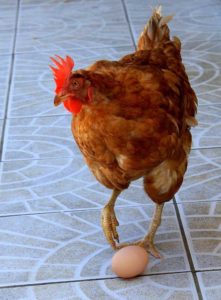
In Week
Depending on the course of individual biorhythms, layers can produce from 1 to 7 eggs per week. The average number of clutches per week for most breeds is 3 to 4 per week. Fluctuations in productivity in this case are due to the seasonal factor, the breed of the layer, the chicken diet and the length of daylight hours in the hen house.
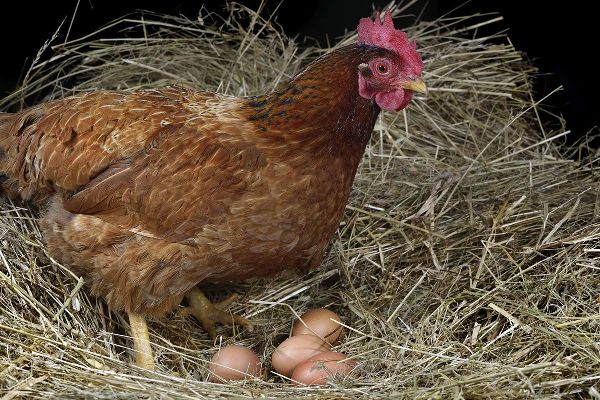
Per month
The number of eggs produced by a hen during a month is rarely less than 15 pieces, the maximum achievable result for layers with high performance is about 30 pieces per month. Average monthly egg production varies for chickens of various breeds in the range of 18-24 pieces per month.
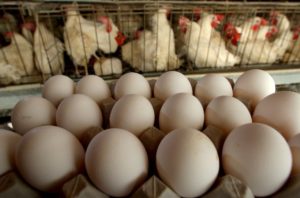
In year
The annual productivity of layers is directly dependent on the conditions of keeping. So, as a result of the action of unfavorable factors, for example, lack of feed or sunlight, chickens may stop rushing in a warm period. On the other hand, provided the recommended rational parameters are provided, laying hens' egg production rates can reach 330-340 eggs per year. The minimum number of clutches brought by chickens during the year, provided acceptable conditions of keeping, is 200 pieces, while the average annual egg production is at a fairly high level and fluctuates in the range of 280-300 eggs per year.
What determines the quantitative indicator of egg production in chickens, how to increase it
Some experts argue that the period during which it is possible to achieve an increase in productivity by adjusting the diet and conditions of the laying hens is a very limited period of time. For egg breeds, it is in the range between the time the bird reaches its optimal performance (6-8 months) and the period during which a steady decline in egg production begins (1-2 years). Nevertheless, experienced farmers identify a number of factors, the correction of which, according to their observations, led to an increase in egg production in chickens.
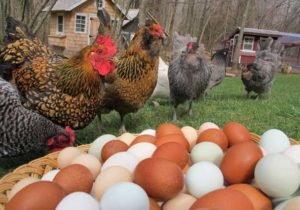
So, increasing the productivity of layers contributes to:
- Keeping birds in a chicken coop with a sufficient number free areaper individual.
Important! It is recommended to organize a room for breeding layers of at least 1 m2 for 5 individuals.
- Security regular replacement of livestock, usually about 70-80% of the herd is renewed.
Note! The optimal time for this is the period before the onset of cold weather for birds in the second year of the active laying period.
- Experts say that it is impossible to achieve optimal performance using dry feed alone. It is necessary to provide even distribution over 2-3 portions of the daily ration of layerswithout allowing them to starve or overfeed.
Important! Revision of the diet of layers, which should contain wet mash, greens and mineral and vitamin complexes, phosphorus and calcium, necessary for the formation of the shell, eliminates the depletion of the chicken. It is necessary to ensure the intake of fats, proteins and carbohydrates into the body of chickens in the recommended proportions. Some breeders have achieved increased productivity of chickens by using different types of grain with the addition of milk or water.
- Security safety of laid eggs achieved by organizing inclined trays, excluding their damage and theft by pests.
- Systematic conduct a set of measures aimed at maintaining the health of the bird.
Note! Such measures may include therapeutic and prophylactic procedures designed to protect birds from the action of pests, skin and intestinal parasites, vaccinations to protect against diseases of infectious and viral etiology.
- Ensuring that the necessary sanitary and hygienic procedures for the maintenance of the chicken coop premises (cleaning, disinfection, bedding change).
- To increase the productivity of birds, you should provide them with optimal daylight hours. Usually, artificial lighting is used for this using incandescent lamps, the duration of which should be at least 12 hours.
Note! Excessive daylight hours cause fatigue in chickens. In this regard, the dark period of the day in a chicken coop should be at least 10 hours to ensure proper rest of the livestock.
- Disappearance of egg production may be related to molting period the livestock. Experts note that the time required to change the down cover is about 1 month. However, experienced farmers can speed up this physiological process by completely limiting food and fluid. Under the conditions created by the coming stressful situation, the molting process takes several days. After its completion, it is necessary to create optimal conditions for keeping layers and use a balanced diet, while good productivity, according to breeders, will be restored in a few days.
- Experienced breeders claim that increased egg production can be achieved by ensuring comfortable indicators of the indoor climate. Their recommendations concern, in particular, the optimal modes of air humidity, which, according to their observations, should be in the range of 60-70%.
Important! The maintenance of comfortable temperature conditions in winter time... To do this, it is necessary to insulate the premises of the chicken coop and, if necessary, use additional heating using infrared lamps.
- It is not recommended to ignore the important role that the daily exercise.
Note! For its implementation, it is necessary to equip a special area, isolated from wind and snow, and ensure daily walking of the livestock for 1-2 hours.
Video: how to increase egg production in chickens
How does the breed affect the egg production of chickens: comparative indicators of egg production of the most popular
Increasing herd performance can be achieved by optimizing the factors listed above. At the same time, the main factor that determines egg production in chickens is their breed. It is the variety that provides a certain number of eggs per unit of time, largely determines their mass and features of the reproductive process. A clear illustration of this is the following comparative performance indicators for the main breeds of layers, including:
- Lohman Brown provides an annual productivity of 315-320 pieces per year with an average weight of each egg 34-63 g.
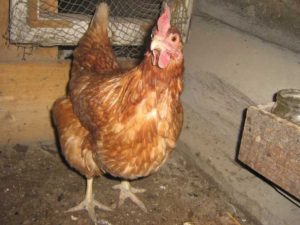
- High Line produces about 340-350 pieces per year, weighing in the range of 60-65 g.
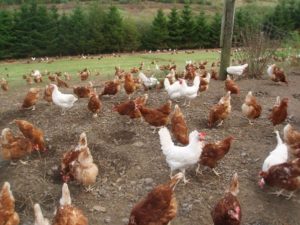
- Hisex White (White) brings clutch of 300-315 pieces per year with an average weight of each in the range of 63-64 g.
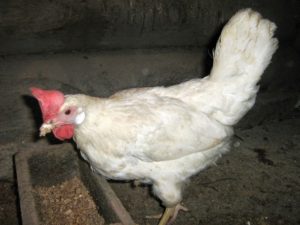
- Hisex Brown provides productivity at the level of 280-300 pieces per year with an average weight of each about 70 g.
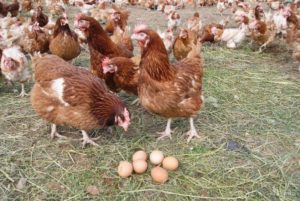
- Leghorn yields from 200 to 250 and even 300 eggs per year with an average weight ranging from 55-65 g.
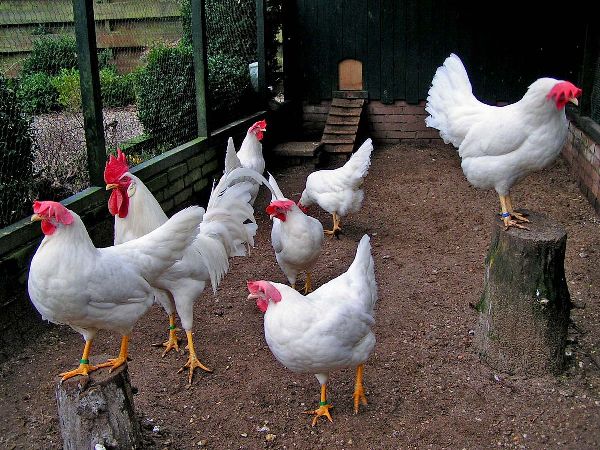
- Russian white the breed is distinguished by average productivity indicators, providing a clutch of 200-240 pieces per year with weight fluctuations within 55-60 g.
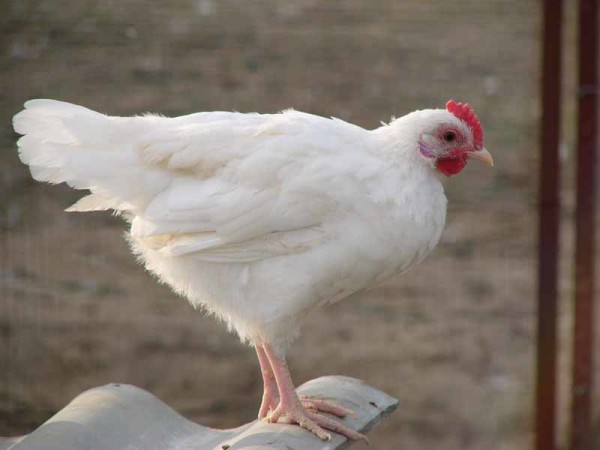
- Expected breeding performance New Hampshire is 180-240 pieces per year with an average weight of 60-70 g.
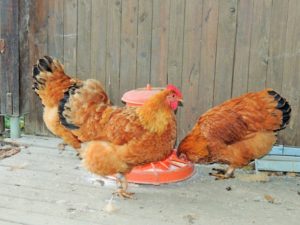
- Breckel brings about 190 pieces per year, weighing from 58 to 60 g.
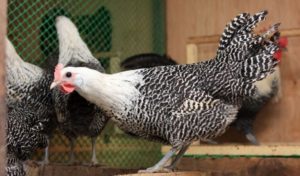
- Russian Crested the breed is capable of producing 160-180 pieces per year with an average weight of 55-60 g.
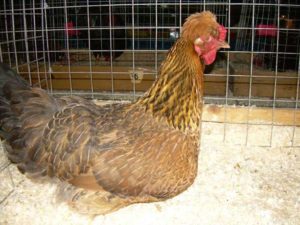
From the data presented, it is clear that the variety of hens is the main factor determining both the potential productivity of layers and the average weight of eggs. The difference in productivity, which for different breeds ranges from 1.5 to 2 times, is explained by the constitution of the quads and the direction that determines the direction of the farmer's efforts, the maintenance regime and the diet of the chickens. Thus, the distinguishing features of egg laying hens are small dimensions, early start of laying and high mobility. For chickens of the meat and egg direction, the characteristic features are good productivity with a developed physique, however, they differ in a longer period of formation of the reproductive system and entry into the age of laying.
Note! As a separate species, experts distinguish hybrid breeds of laying hens, providing laying of 310-320 pieces per year. To the disadvantages of this breed, farmers attribute the impossibility of reproduction due to artificial means and used to breed the breed.
Potential egg production of hens is one of the main parameters that determines the benefit to a breeder from raising hens. Depending on the chosen direction of activity (production of meat and / or eggs), the farmer chooses a certain breed of laying hens, which largely determines their productivity, and therefore the producer's profit. However, experienced breeders argue that there are opportunities to increase egg production, which primarily include creating near-optimal conditions for the herd and adjusting the diet of the herd.

